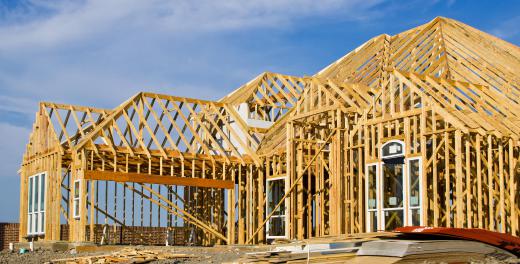Interior protection is a collection of temporary barriers used to limit contamination of a room while construction work, particularly on the roof, occurs. Without interior protection, debris, dust, tools, and other materials could fall through into public and working areas, creating hazards. A facility might need to be closed for construction, which could generate a substantial loss of profits. Using interior protection keeps the building clean and safe, and allows it to remain open for business rather than experiencing an interruption during retrofitting, remodeling, or repair.
A key component to interior protection is a suspended ceiling made from tough plastic sheeting. It hangs below the original ceiling to trap dust and debris while keeping the space below clean. For some kinds of projects, it may also be necessary to cover walls and floors, at least temporarily. In a home remodel, for instance, the homeowners want to avoid marks and scuffs caused by worker traffic and other issues.

In addition to the suspended ceiling and other sheeting used to protect the inside of a building during work, interior protection also requires careful cleaning at the end of the project. Known as high structure cleaning, it involves carefully removing dust and debris that may be trapped on girders, trusses, heating and cooling systems, and so forth. This ensures that when the suspended ceiling is removed, material will not rain down from nooks and crannies.

Whether a roof is being installed or repaired, interior protection can be important. Some construction companies offer it as part of their services, or a contractor may have a relationship with a company that frequently partners on projects. In other cases, the client will need to arrange this service separately. In discussions about interior protection and a debris containment system, building owners may want to ask about the services offered, the price, and what to expect during construction.
It is possible to work through construction with measures like interior protection to keep the working environment clean and protect workers. Construction can be noisy, however, and this may limit activities. If sound is a significant issue, workers may need to schedule their activities around the noisiest parts of construction, or could discuss the use of sound baffles to limit noise pollution in the workplace. This can be especially important if the decibel levels from construction noise are high enough to pose a risk of hearing damage or loss for workers.
Ever since she began contributing to the site several years ago, Mary has embraced the exciting challenge of being a About Mechanics researcher and writer. Mary has a liberal arts degree from Goddard College and spends her free time reading, cooking, and exploring the great outdoors.

